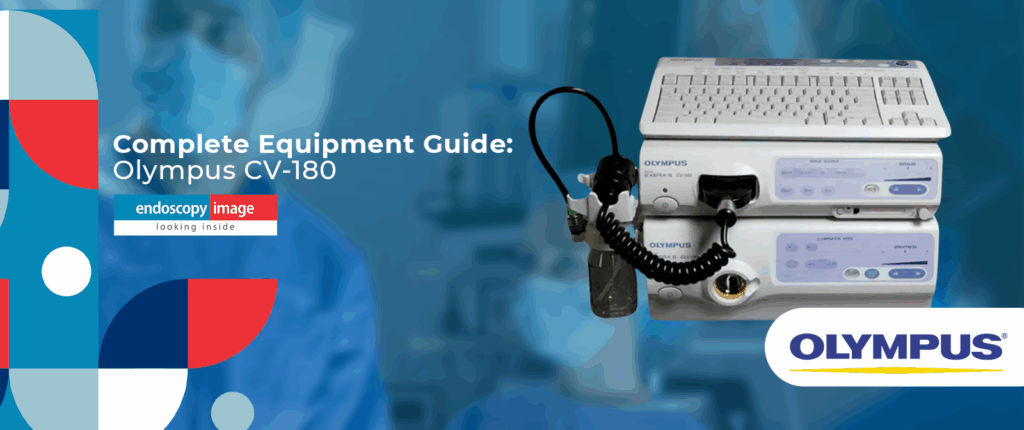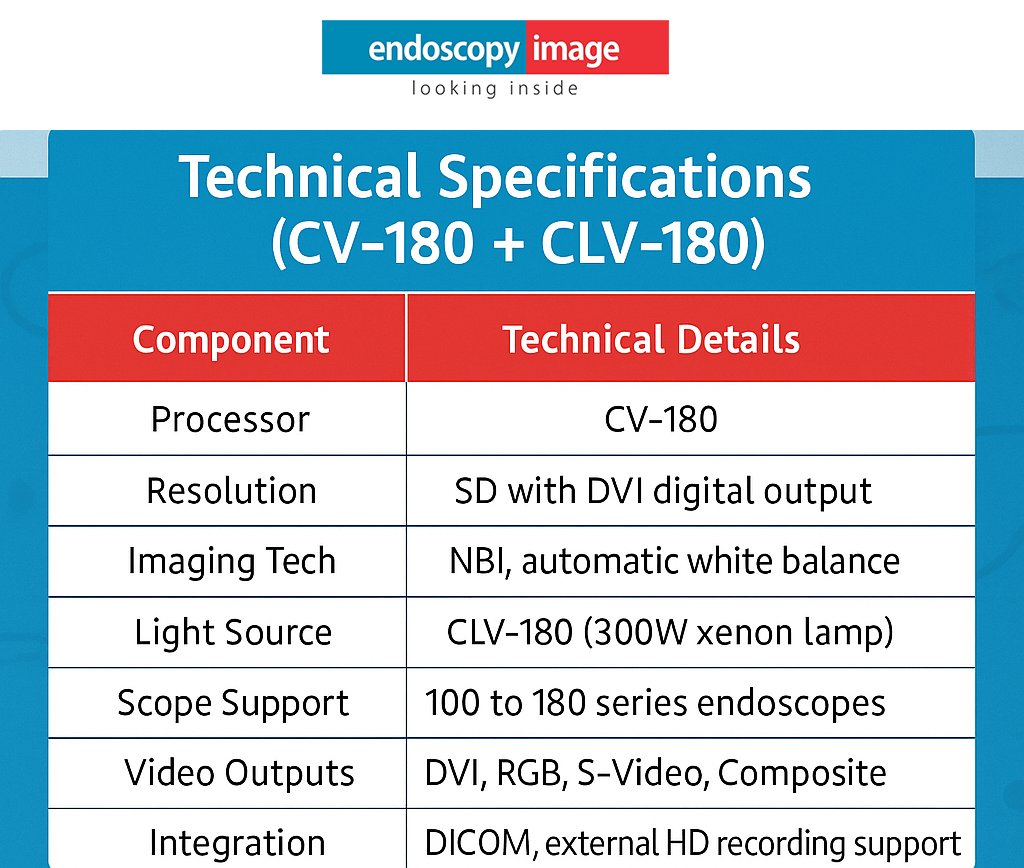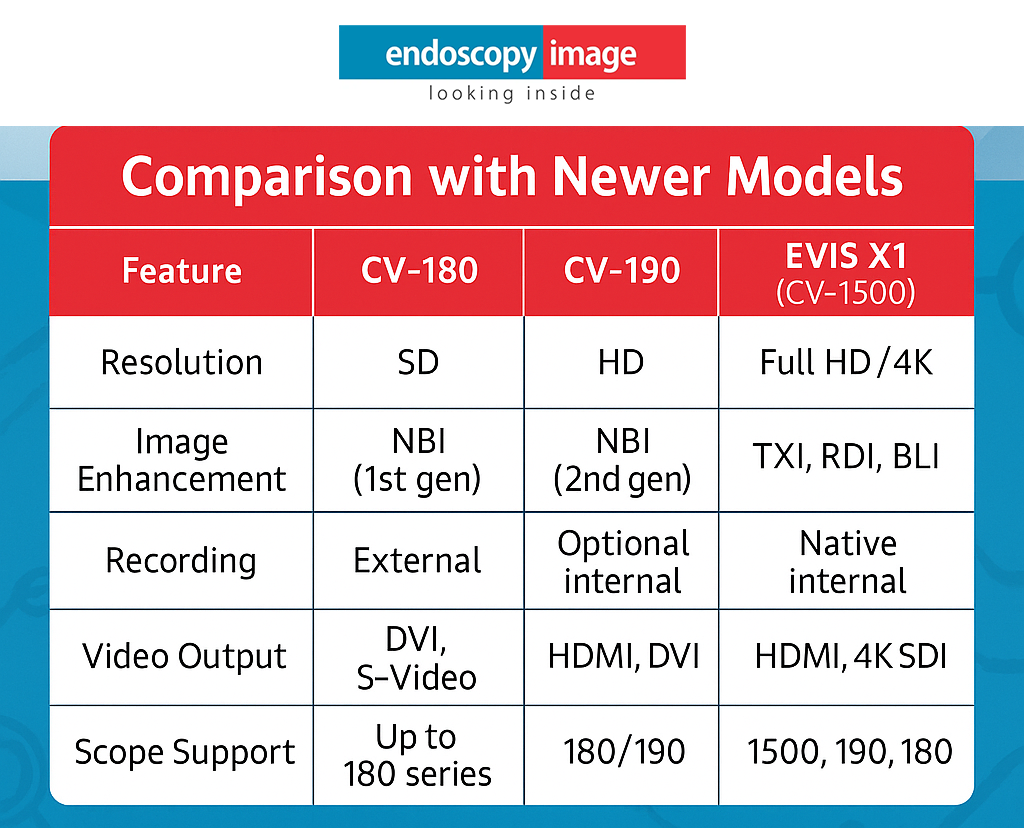Endoscopy Equipment in Mexico and Latin America: Your Complete 2025 Buying Guide
Discover the key differences between endoscopy and colonoscopy procedures. Expert guide for medical..
+1 (786) 681-5247
admin
June 16, 2025

The Olympus EVIS EXERA II (CV-180) is one of the most widely used endoscopy systems over the past decade. Still commonly found in clinics, hospitals, and diagnostic centers, the CV-180 offers an accessible entry point to digital endoscopy. This guide will help you understand why the CV-180 remains relevant in 2025, its technical specifications, compatible scopes, clinical use cases, and when it might be time to upgrade to a newer model like the CV-190 or EVIS X1.
The EVIS EXERA II is Olympus’s second-generation video processor platform, launched as the successor to the CV-160. Its most common setup includes the CV-180 processor and the CLV-180 xenon light source, forming a complete system.

Narrow Band Imaging (NBI) is one of the key features of the CV-180. It enhances mucosal and vascular patterns using optical filters, improving early detection of abnormalities—especially useful for esophageal, gastric, and colon examinations.

Consider upgrading from the CV-180 if:
– You’re moving toward HD or 4K systems
– Advanced imaging (TXI, RDI, BLI) is critical for your work
– You’re performing early lesion detection with high diagnostic demand
– Scope weight and flexibility are becoming operational concerns
➡️ The Olympus CV-180 is a second-generation video processor from the EVIS EXERA series. Despite being launched years ago, it remains a widely used and reliable digital endoscopy platform. In 2025, it continues to be a smart choice for clinics and hospitals with limited budgets, offering enhanced SD image quality, first-generation Narrow Band Imaging (NBI), broad endoscope compatibility, and external recording support.
➡️ The CV-180 supports endoscopes from the 100 to 180 series. Some of the most common models include:
Gastroscopes:
GIF-Q180: standard use with excellent image clarity
GIF-H180: high-resolution, ideal for early lesion detection
GIF-XP180N: ultra-slim, perfect for pediatrics or delicate anatomy
Colonoscopes:
CF-Q180AL: wide field of view and great depth
PCF-Q180AL: pediatric version with smaller diameter
CF-H180AL: advanced scope with superior image resolution
➡️ You should consider upgrading if your facility:
Requires HD or 4K video quality
Needs built-in recording capabilities
Performs high-demand diagnostic procedures that benefit from advanced imaging (TXI, RDI, BLI)
Prefers LED lighting and CMOS-based scopes
Seeks improved scope ergonomics and flexibility
The Olympus EVIS EXERA II (Olympus CV-180) remains a solid and reliable system for facilities looking to enter or maintain digital endoscopy without the high investment of newer platforms. In 2025, it still delivers sufficient image quality for routine procedures and is supported by a wide range of compatible scopes, service, and spare parts.
Need help selecting the right endoscopy system for your clinic?
Talk to a specialist and receive a custom quote with options from Olympus, Fujinon, and Pentax.
Discover the key differences between endoscopy and colonoscopy procedures. Expert guide for medical..
Discover the key differences between endoscopy and colonoscopy procedures. Expert guide for medical..
Discover the main types of scopes used in endoscopy and their purposes. Learn..
Unlock the power of DICOM in endoscopy: Learn how this critical standard revolutionizes..
Deprecated: File Theme without comments.php is deprecated since version 3.0.0 with no alternative available. Please include a comments.php template in your theme. in /home/endoscop/public_html/wp-includes/functions.php on line 6131